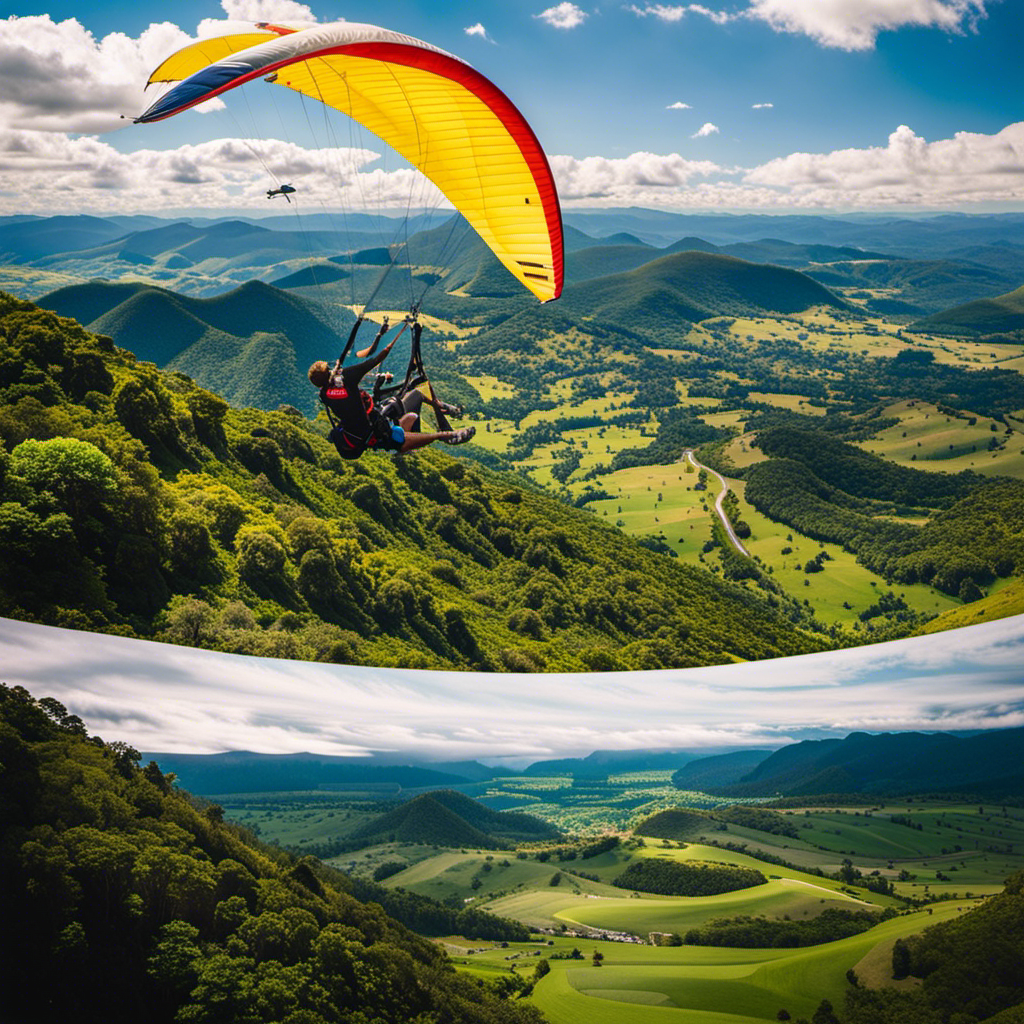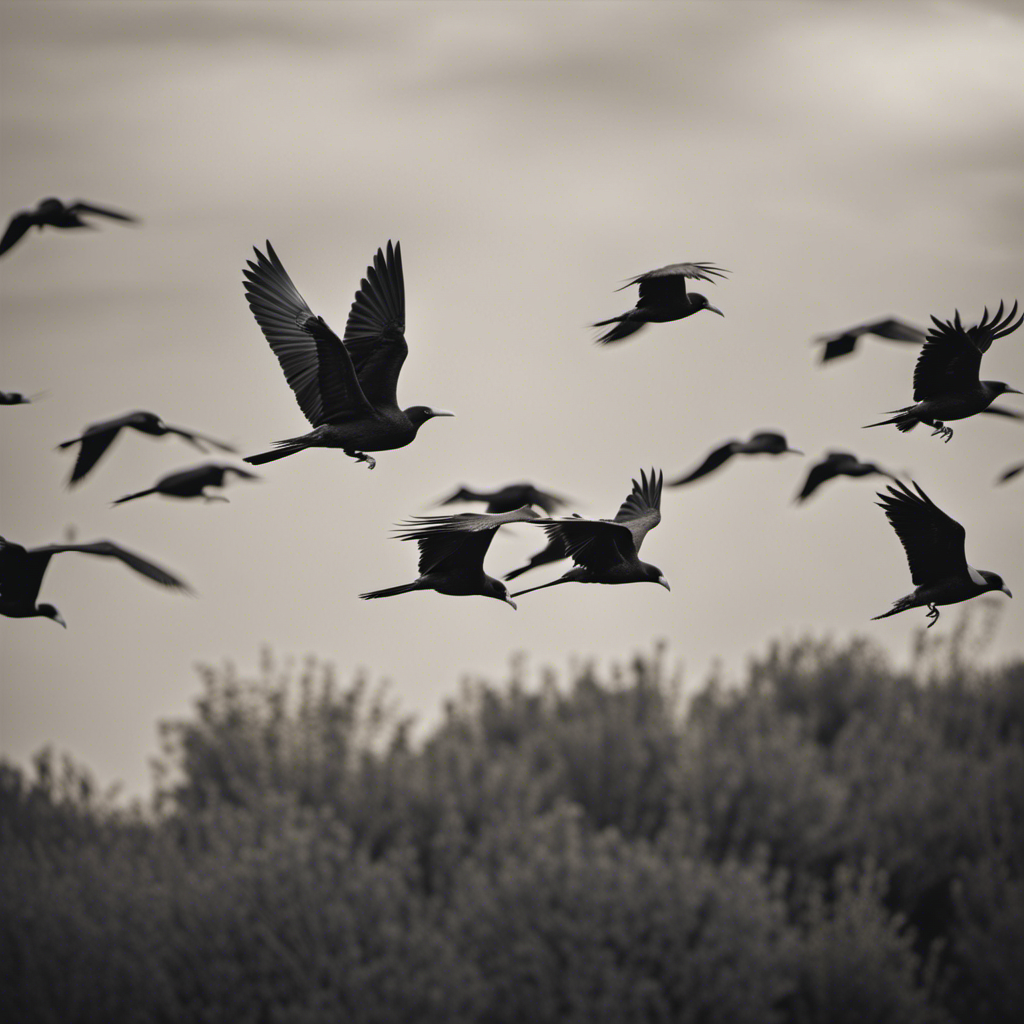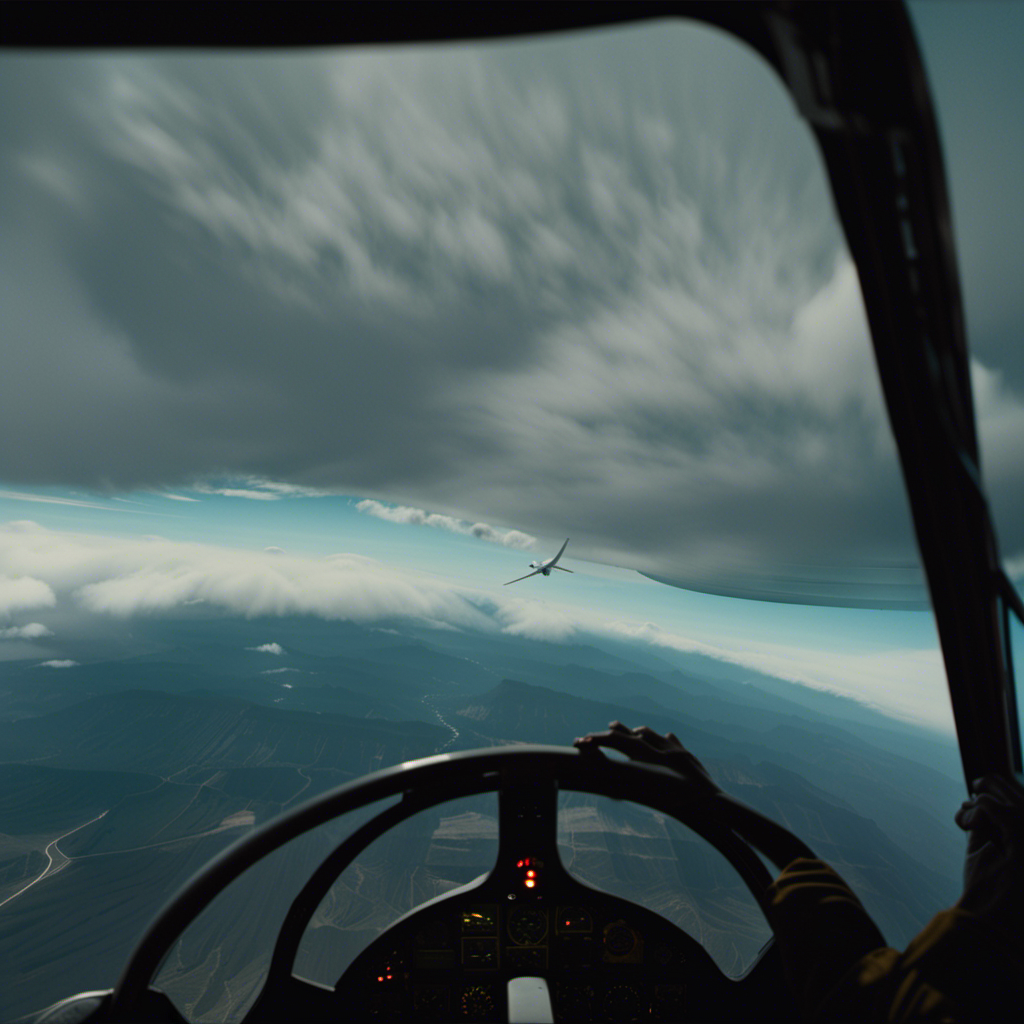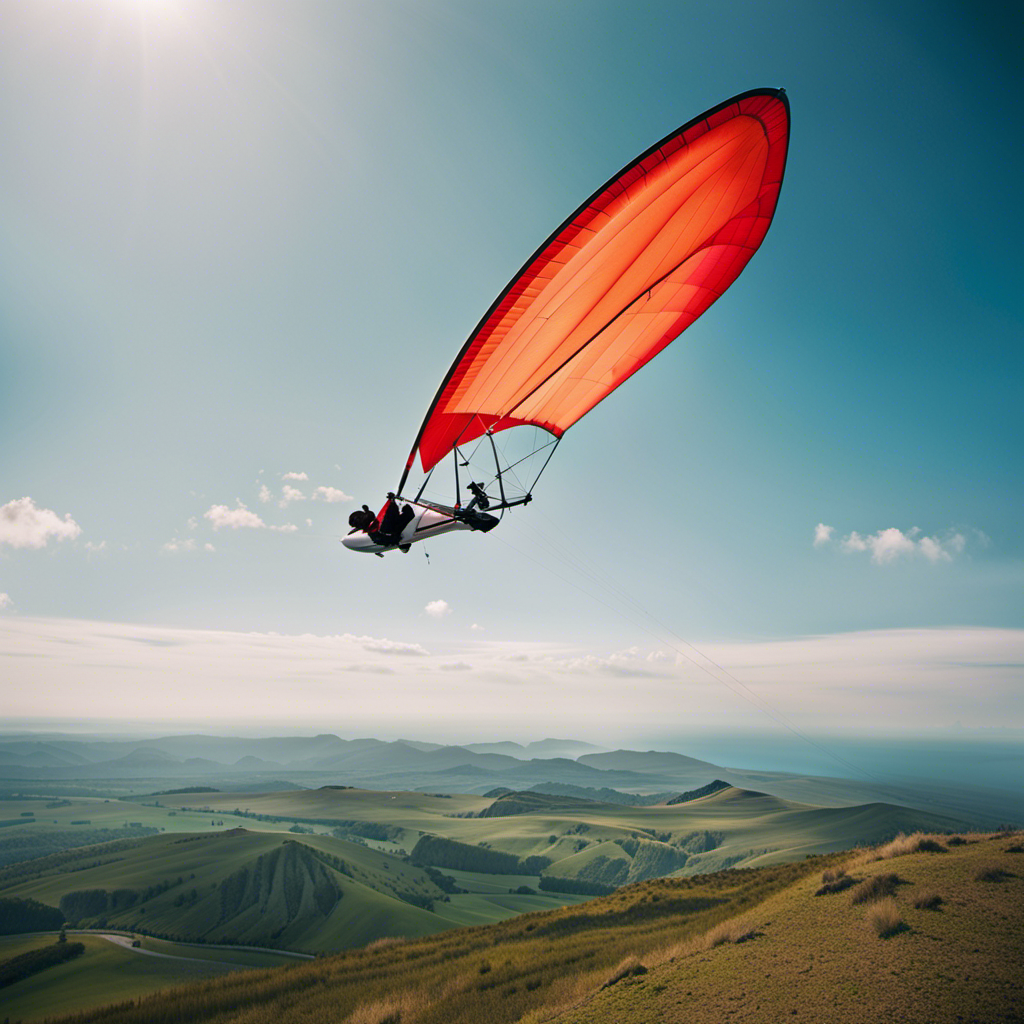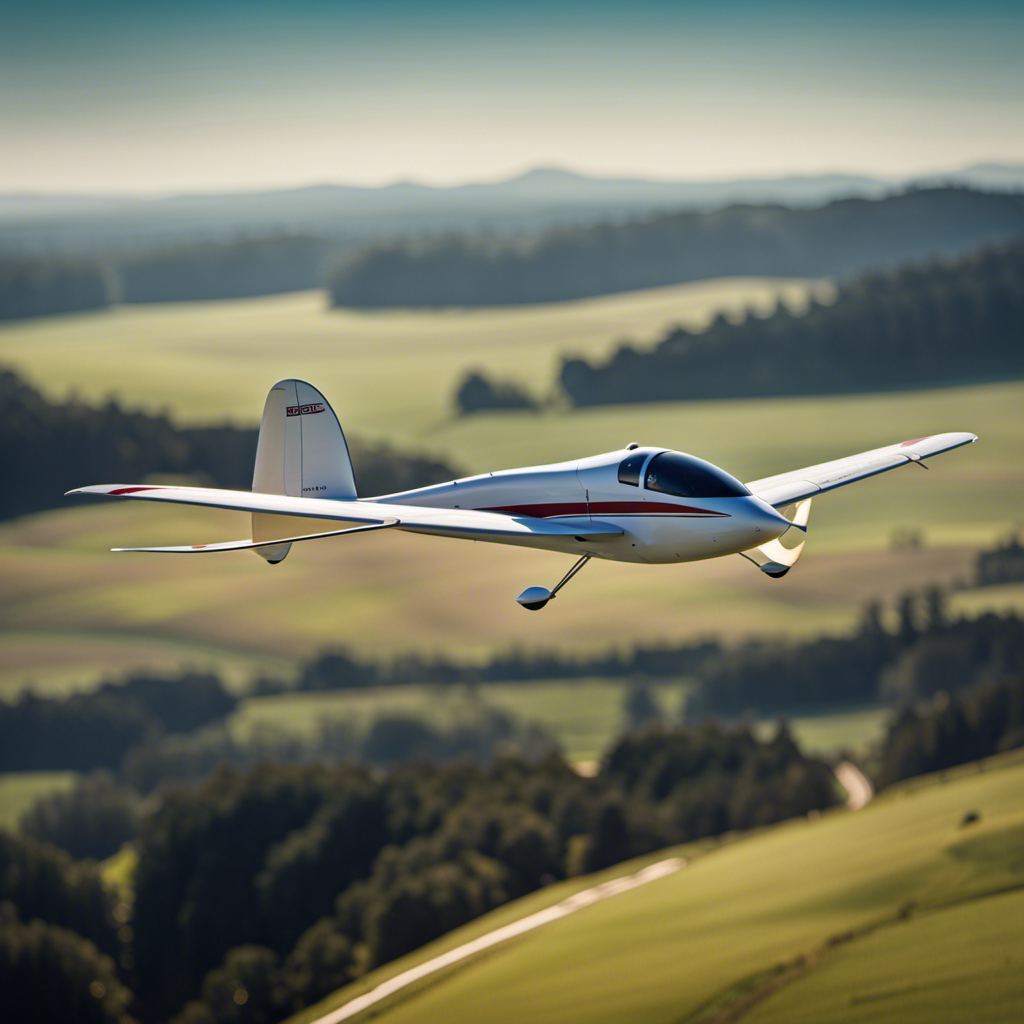As a passionate hang glider, I have soared through the skies, feeling the wind beneath my wings. Now, I am excited to share my knowledge and passion with fellow enthusiasts.
Welcome to Hang Gliders Lookout: A Guide for Enthusiasts. In this comprehensive article, we’ll cover everything from the basics of hang gliding to finding the perfect location, preparing for your first flight, and even maintaining your hang glider.
So buckle up, because we’re about to take flight in the thrilling world of hang gliding.
Key Takeaways
- Hang glider maintenance and safety are crucial for ensuring optimal performance and longevity of the equipment.
- Advanced hang gliding techniques, such as the spiral dive and wingover, can enhance flying skills and push the boundaries of the sport.
- Researching and attending hang gliding competitions and events can provide valuable insights and networking opportunities for enthusiasts.
- Following hang gliding etiquette and rules, such as respecting airspace boundaries and communicating effectively, is essential for a safe and enjoyable flying experience.
Hang Gliding Basics
Hang gliding is a thrilling sport that involves the use of a special aircraft. When it comes to choosing equipment for hang gliding, there are a few key factors to consider.
The first is the wing size, which should be selected based on your weight and skill level. Next, you’ll need a harness, helmet, and reserve parachute for safety purposes. It’s important to choose equipment that is certified and meets industry standards.
Additionally, weather conditions play a crucial role in hang gliding. It’s essential to check the wind speed and direction, as well as the presence of thermals and turbulence. These factors can greatly affect your flight experience and safety.
Now that you understand the basics of hang gliding equipment and weather conditions, let’s delve into the next section about choosing the right location for your adventure.
Choosing the Right Location
Picking the perfect spot is crucial when deciding where to launch your hang glider. As an experienced hang glider enthusiast, I understand the importance of selecting a location that offers the right conditions for a successful flight. Here are three key factors to consider when choosing the right spot:
-
Mountainous Terrain: Look for areas with elevated landscapes that provide ample height for takeoff and landing. Mountainous regions offer the advantage of strong updrafts, allowing you to gain altitude and stay airborne for longer periods.
-
Wind Patterns: Analyze the wind patterns in the area. Look for consistent winds that provide a steady flow and are not too gusty. Avoid locations with turbulent or unpredictable winds, as they can make controlling the glider more challenging.
-
Safety Considerations: Prioritize safety by choosing locations that have clear, obstacle-free landing zones and minimal hazards such as power lines or dense vegetation.
By carefully considering these factors, you can select a location that maximizes your chances of having a safe and enjoyable hang gliding experience.
Transitioning to the next section, finding hang gliding schools and instructors, will further enhance your knowledge and skills in this exhilarating sport.
Finding Hang Gliding Schools and Instructors
When it comes to learning hang gliding, it’s essential to find reputable schools and experienced instructors who can provide proper guidance and instruction. These professionals have the knowledge and expertise to teach you the necessary skills to fly safely and confidently.
Before enrolling in a hang gliding school, it’s important to research the school’s reputation and check if they have certified instructors. Additionally, ensure that the school provides proper hang gliding gear and safety equipment for students to use during training. This includes a hang glider, harness, helmet, and emergency parachute.
Preparing for Your First Flight
As someone preparing for my first hang gliding flight, it is important to focus on physical fitness and conditioning. Strengthening my core muscles and improving my cardiovascular endurance will help me handle the physical demands of hang gliding.
Additionally, mental preparation and confidence building are crucial to ensure a successful flight. Visualizing the flight, practicing relaxation techniques, and positive self-talk will help me stay calm and focused.
Lastly, knowing what to expect on my first flight is essential. Understanding the equipment, flight procedures, and safety protocols will help me feel more comfortable and confident during the experience.
Physical Fitness and Conditioning
Maintaining physical fitness and conditioning is crucial for hang gliders to ensure a safe and enjoyable experience. Fitness training plays a vital role in preparing the body for the demands of flying. Aerobic exercises like running or cycling improve cardiovascular endurance, allowing pilots to sustain the physical effort required during flights.
Strength training exercises, such as weightlifting or bodyweight exercises, help build the necessary upper body strength to control the glider effectively. Flexibility exercises like yoga or stretching routines enhance range of motion, reducing the risk of muscle strains or joint injuries. Incorporating core stability exercises, like planks or sit-ups, improves balance and control while in the air.
By focusing on fitness training and injury prevention, hang gliders can minimize the risk of accidents and maximize their performance in the sky.
Transitioning into mental preparation and confidence building, developing a strong mindset is equally important.
Mental Preparation and Confidence Building
Developing a strong mindset and building confidence are crucial aspects of mental preparation for hang gliders. As an experienced hang glider pilot, I understand the importance of having the right mindset before taking to the skies. Here’s what you need to know about mental preparation and confidence building:
- Visualization techniques: Visualizing successful flights can help boost confidence and prepare your mind for the challenges ahead.
- Positive self-talk: Encouraging yourself with positive affirmations can help overcome doubts and build confidence.
- Mental rehearsals: Practicing different flight scenarios in your mind can help improve decision-making skills and increase confidence.
- Goal setting: Setting achievable goals and breaking them down into smaller steps can provide a sense of accomplishment and boost confidence.
With a strong mindset and confidence, you’ll be ready to take on your first flight. Now, let’s delve into what to expect on this exhilarating journey.
What to Expect on Your First Flight
Get ready for an exhilarating journey as we explore what you can expect on your first hang gliding flight.
Your first flight experience will be an unforgettable one, filled with excitement and adrenaline. As a beginner, it’s important to be aware of the common mistakes that can occur during this exhilarating activity.
One mistake often made by beginners is not properly adjusting their body position. It’s crucial to maintain a balanced and stable posture to ensure a smooth and controlled flight.
Another common mistake is overcorrecting in response to changes in wind direction, which can lead to instability. Remember to make small, gradual adjustments to avoid sudden movements.
Now that you know what to expect on your first flight, let’s transition into the next section about hang glider maintenance and care.
Hang Glider Maintenance and Care
Taking proper care of your hang glider is essential for its performance and longevity. As an enthusiast, I understand the importance of maintaining and repairing my hang glider equipment. Here are some key steps to ensure the optimal condition of your hang glider:
- Inspect the frame regularly for any cracks or damage, paying special attention to the joints and connections.
- Clean the sail and remove any dirt or debris that may affect its aerodynamic properties.
- Check the control cables and pulleys for wear and tear, and lubricate them if necessary.
- Store your hang glider in a dry, secure place to prevent damage from weather or pests.
By following these maintenance guidelines, you can ensure that your hang glider is always in top shape.
Now, let’s move on to exploring advanced hang gliding techniques to enhance your flying skills.
Advanced Hang Gliding Techniques
Now that you’ve mastered the basic techniques, let’s dive into some advanced hang gliding maneuvers to take your flying skills to the next level.
Advanced hang gliding techniques are essential for those who want to compete in hang gliding competitions and push the boundaries of what is possible in the sport.
One of the most important techniques to master is the spiral dive. This maneuver involves intentionally entering a steep banking turn while descending rapidly.
Another advanced technique is the wingover, where the pilot uses weight shifting to initiate a series of pendulum-like swings, creating a thrilling sensation of weightlessness.
These maneuvers require precise control and coordination, as well as a deep understanding of aerodynamics.
Safety is paramount in the world of hang gliding, so let’s now explore some important hang gliding safety tips that will help you enjoy this exhilarating sport while minimizing risks.
Hang Gliding Safety Tips
It’s important to remember that safety should always be a top priority when participating in hang gliding. Proper hang gliding equipment and knowledge of weather conditions are crucial for a safe and enjoyable flight. Let’s take a closer look at some essential equipment and factors to consider before taking off.
| Equipment | Description | Importance |
|---|---|---|
| Hang glider | Lightweight aircraft with a rigid wing structure | Essential |
| Harness | Connects the pilot to the hang glider | Vital |
| Helmet | Provides head protection in case of accidents | Crucial |
| Reserve parachute | Emergency device for rapid descent | Critical |
Weather conditions play a significant role in hang gliding safety. It’s essential to check forecasts for wind speed, direction, and stability. Strong winds can make flying difficult or dangerous, while unstable air can lead to turbulence. Pay attention to cloud formations, as they can indicate potential thermals or storm systems. By understanding the importance of proper equipment and being aware of weather conditions, you can ensure a safer hang gliding experience.
Transition into the subsequent section about ‘hang gliding competitions and events’: Now that we’ve covered the importance of safety in hang gliding, let’s explore the exciting world of hang gliding competitions and events.
Hang Gliding Competitions and Events
To fully immerse yourself in the thrilling world of hang gliding competitions and events, make sure to research and attend local gatherings of fellow hang gliding enthusiasts. These events provide an opportunity to witness the skill and precision of experienced pilots, as they compete for glory and showcase their talent.
Here are three key aspects of hang gliding competitions and events:
-
Hang Gliding Equipment: These events are the perfect place to learn about the latest advancements in hang gliding equipment. From state-of-the-art gliders to cutting-edge safety gear, you’ll get a chance to see and even try out the equipment used by top pilots.
-
Hang Gliding Records: Competitions often serve as platforms for setting and breaking hang gliding records. Keep an eye out for remarkable achievements in distance covered, altitude reached, and speed attained. Witnessing these records being broken is a truly awe-inspiring experience.
-
Networking: Attending hang gliding competitions and events allows you to connect with fellow enthusiasts and professionals in the field. It’s an excellent opportunity to exchange knowledge, learn from experienced pilots, and even find potential flying buddies for future adventures.
By immersing yourself in these exciting hang gliding events and gathering valuable insights into the equipment and records, you’ll be well-prepared to take your own hang gliding journey to new heights.
Now, let’s dive into the important topic of hang gliding etiquette and rules.
Hang Gliding Etiquette and Rules
Make sure you familiarize yourself with the proper hang gliding etiquette and rules to ensure a safe and enjoyable experience for yourself and others. When it comes to hang gliding, it’s essential to follow certain guidelines to maintain safety and respect for fellow enthusiasts. Here are some key etiquette rules to keep in mind:
| Etiquette Rules | Description |
|---|---|
| Respect airspace boundaries | Stay clear of restricted areas and respect other pilots’ airspace. |
| Yield right of way | Give way to hang gliders that are already flying, especially during takeoff and landing. |
| Communicate effectively | Use standardized hand signals and radio communication to enhance safety and coordination. |
| Practice good sportsmanship | Be courteous and supportive of other pilots, offering assistance when needed. |
Additionally, it’s important to consider the weather conditions and choose the appropriate hang gliding gear accordingly. Before taking flight, assess factors such as wind speed, direction, and thermals. Ensure that your hang gliding gear, including harness, helmet, and wing, is in good condition and properly maintained. By adhering to hang gliding etiquette and being mindful of weather conditions, you can have a safe and enjoyable experience in the air.
Moving forward, it is essential to have access to hang gliding resources and support.
Hang Gliding Resources and Support
Finding reliable hang gliding resources and support is crucial for enhancing your knowledge and skills in this exhilarating sport.
The hang gliding community offers a wealth of information and assistance to help you navigate the world of hang gliding equipment and techniques.
One of the best resources is the hang gliding equipment manufacturers themselves. They have websites and customer support teams ready to answer your questions and provide guidance on choosing the right gear for your needs.
Additionally, there are online forums and social media groups dedicated to hang gliding where you can connect with experienced pilots and enthusiasts. These communities often share valuable insights, tips, and even organize group flights and events.
Frequently Asked Questions
Are there any age restrictions for hang gliding?
Age restrictions for hang gliding vary depending on the location and the organization providing the activity. While some places may have age limits, it is generally considered safe for kids to participate under proper supervision and training. However, it is important to consider the physical and mental abilities of the child before engaging in this activity. Hang gliding offers unique experiences and challenges for different age groups, with pros including the thrill of flying and the opportunity for personal growth. However, there are also cons to consider, such as the risk of accidents and the need for physical fitness. It is crucial to consult with professionals and adhere to safety guidelines when involving children in hang gliding activities.
How long does it usually take to become proficient at hang gliding?
On average, it takes about 2-3 months to become proficient at hang gliding. The thrill of soaring through the sky and the freedom it offers are just a few of the many advantages of this exhilarating sport.
Is hang gliding a dangerous sport?
Hang gliding can be dangerous, but with proper safety precautions and training, the risks can be minimized. Some hang gliding safety tips include checking weather conditions, using appropriate equipment, and choosing popular hang gliding destinations with experienced instructors.
Can hang gliders be used for long-distance flights?
Hang gliders can indeed be used for long-distance flights, breaking records and offering unique advantages. With their lightweight design and ability to catch thermals, hang gliders are capable of covering impressive distances, making for thrilling and unforgettable journeys.
Are there any weight restrictions for hang gliding?
Weight restrictions are an essential part of hang gliding safety guidelines. As a hang glider pilot, I must adhere to these restrictions to ensure the aircraft’s stability and performance during flight.
Conclusion
In conclusion, hang gliding is an exhilarating sport that offers enthusiasts the opportunity to soar through the skies and experience the freedom of flight. By following the basics of hang gliding, choosing the right location, finding reputable instructors, and taking proper care of your hang glider, you can ensure a safe and enjoyable experience.
Remember to always prioritize safety and stay informed about hang gliding competitions and events. As the saying goes, ‘The sky’s the limit,’ so take to the skies and embrace the thrill of hang gliding.
With a heart that soars as high as the skies, Aria, affectionately known as “Skylark,” is the driving force behind Soaring Skyways. Her journey into the gliding world began as a young dreamer gazing up at the soaring birds, yearning to experience the weightlessness and freedom they embodied. With years of experience both in the cockpit and behind the scenes, Aria’s commitment to the gliding community is unwavering.
